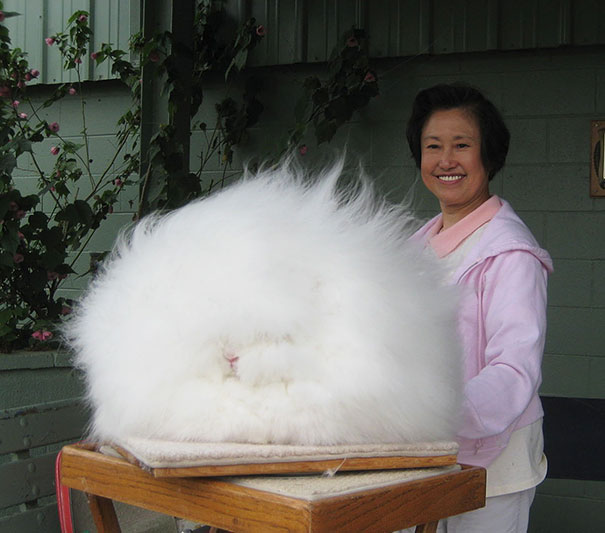It Doesn’t Get Much Prettier Than Milk Glass! Learn How To Identify These Beautiful Pieces
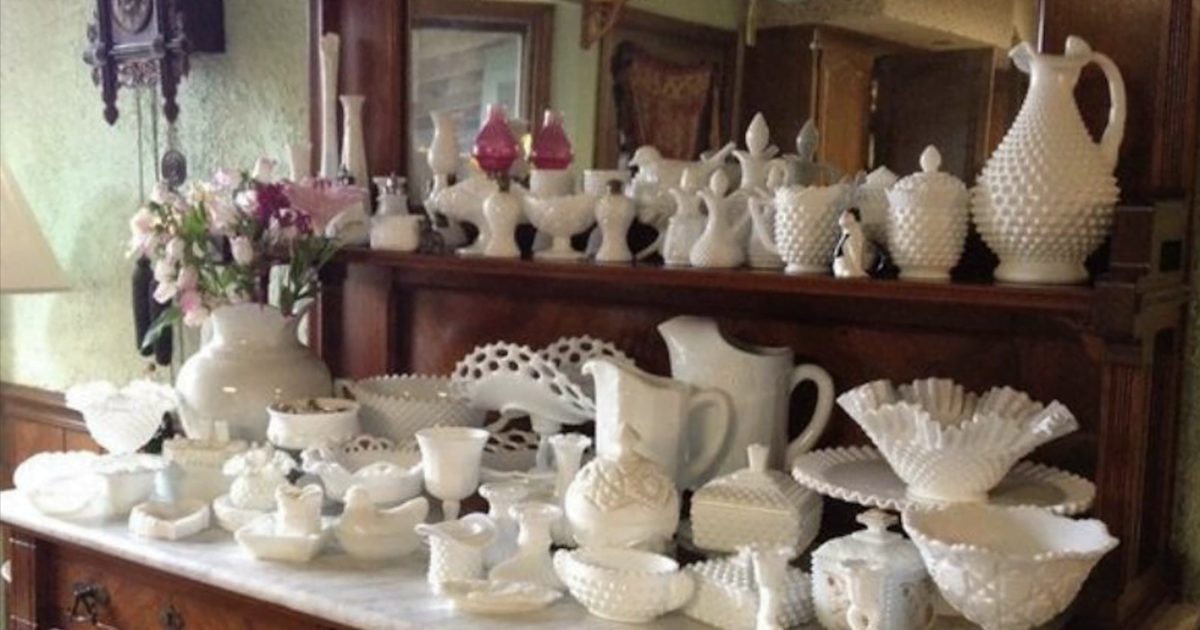
Source: Genevra Boucher: “Years of collecting Milk Glass too. Glad to see people are becoming aware of the very interesting glass items.”
Milk glass has long been a favorite collectible among antique enthusiasts. With its smooth, opaque white finish, milk glass can add a touch of elegance to any decor. In this article, we will explore the history of milk glass, the various types of milk glass, and how to start a milk glass collection
History Of Milk Glass:
Milk glass has been around since the 16th century. The first pieces of milk glass were produced in Venice, Italy, and were known as “lattimo” glass. The glass was made by adding tin or arsenic to the molten glass, which created an opaque white finish. The popularity of milk glass spread throughout Europe and eventually made its way to America in the 19th century.
During the Victorian era, milk glass became a popular choice for tableware, lamps, and decorative items. The glass was often hand-painted with intricate designs and used to create delicate-looking pieces.
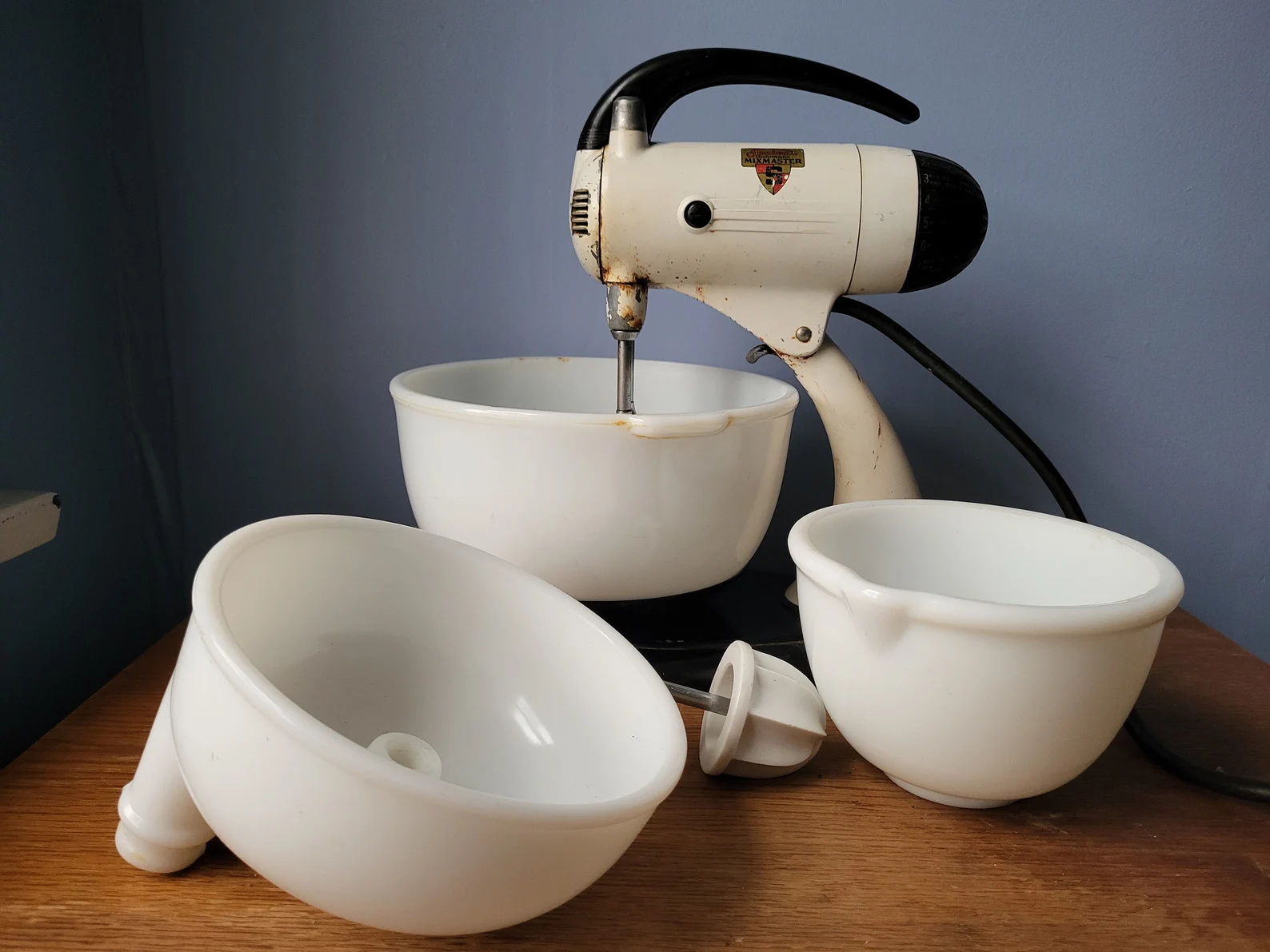
Types Of Milk Glass:
There are several types of milk glass, each with its own unique qualities. Some of the most popular types of milk glass include:
1. Hobnail milk glass – This type of milk glass is characterized by its raised, rounded bumps that resemble hobnails. It was produced by the Fenton Art Glass Company in the early 1900s and was a popular choice for lamps, vases, and other decorative items.
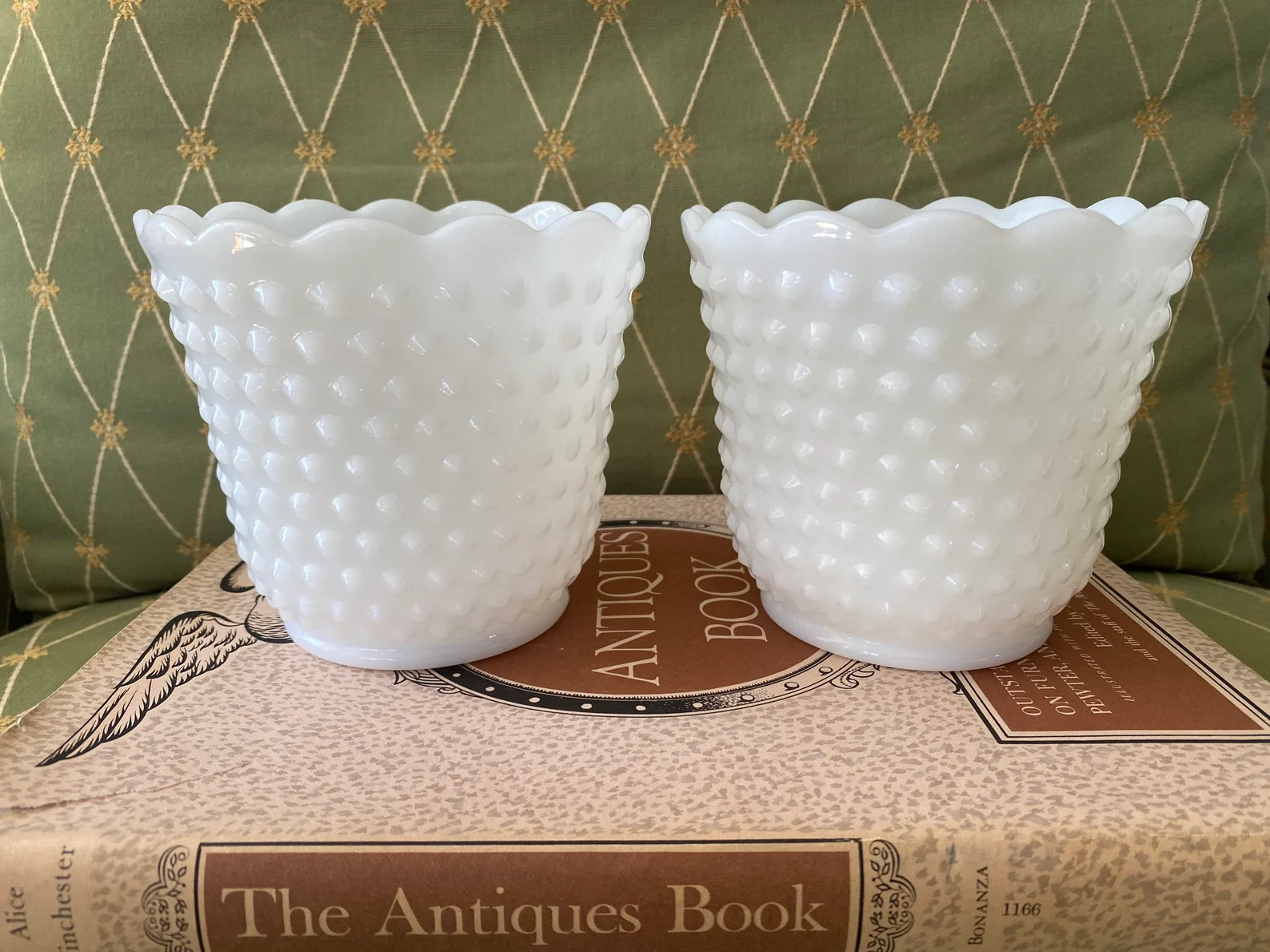
2.Satin milk glass – Satin milk glass has a matte finish that gives it a soft, velvety feel. It was produced by several companies, including Fenton and Westmoreland, and was often used to create figurines, compotes, and other decorative items.
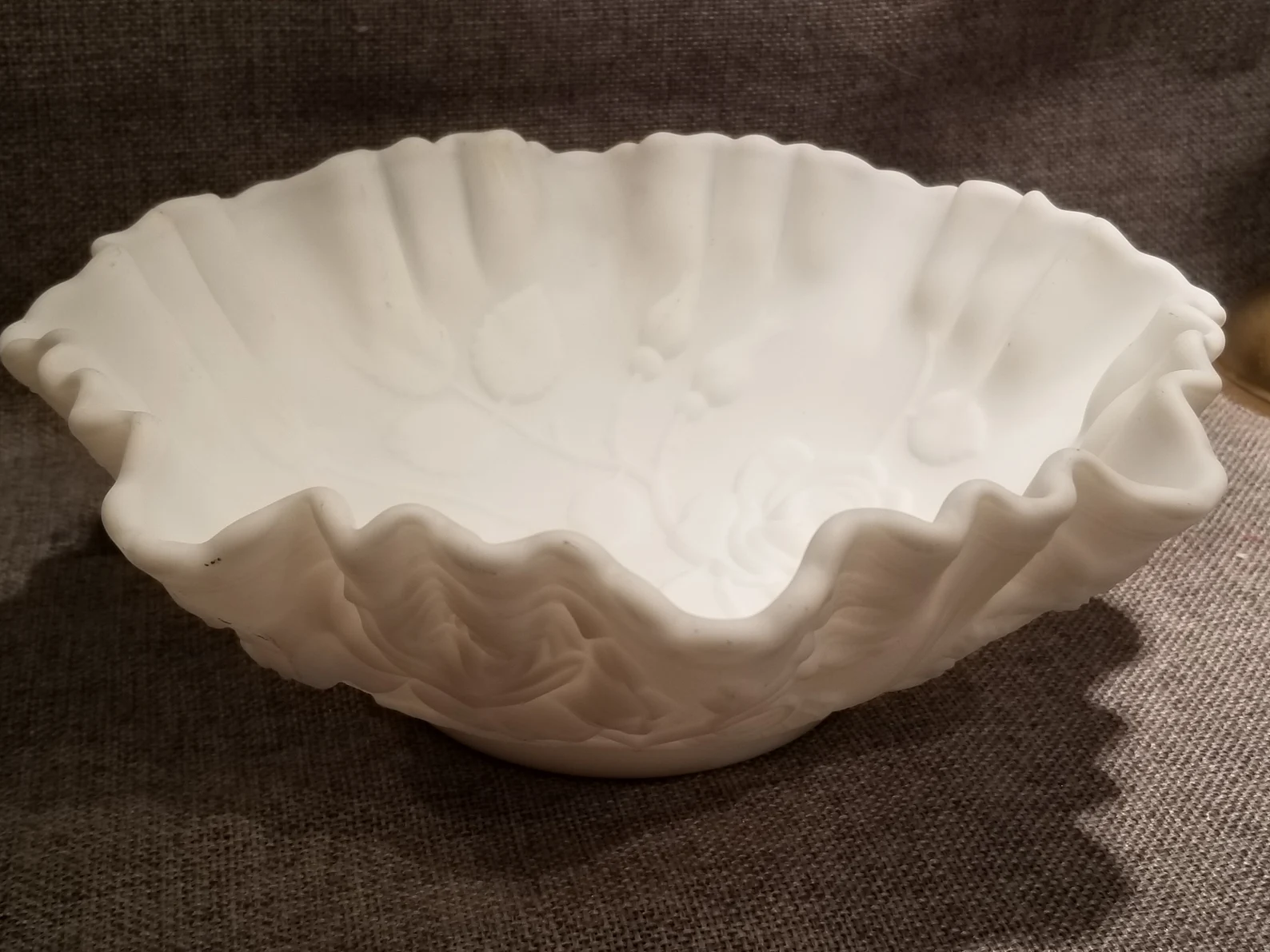
3.Opalescent milk glass – Opalescent milk glass has a pearly, iridescent finish that gives it a unique, shimmering quality. It was produced by several companies, including Fenton and Northwood, and was often used to create vases, bowls, and other decorative items.
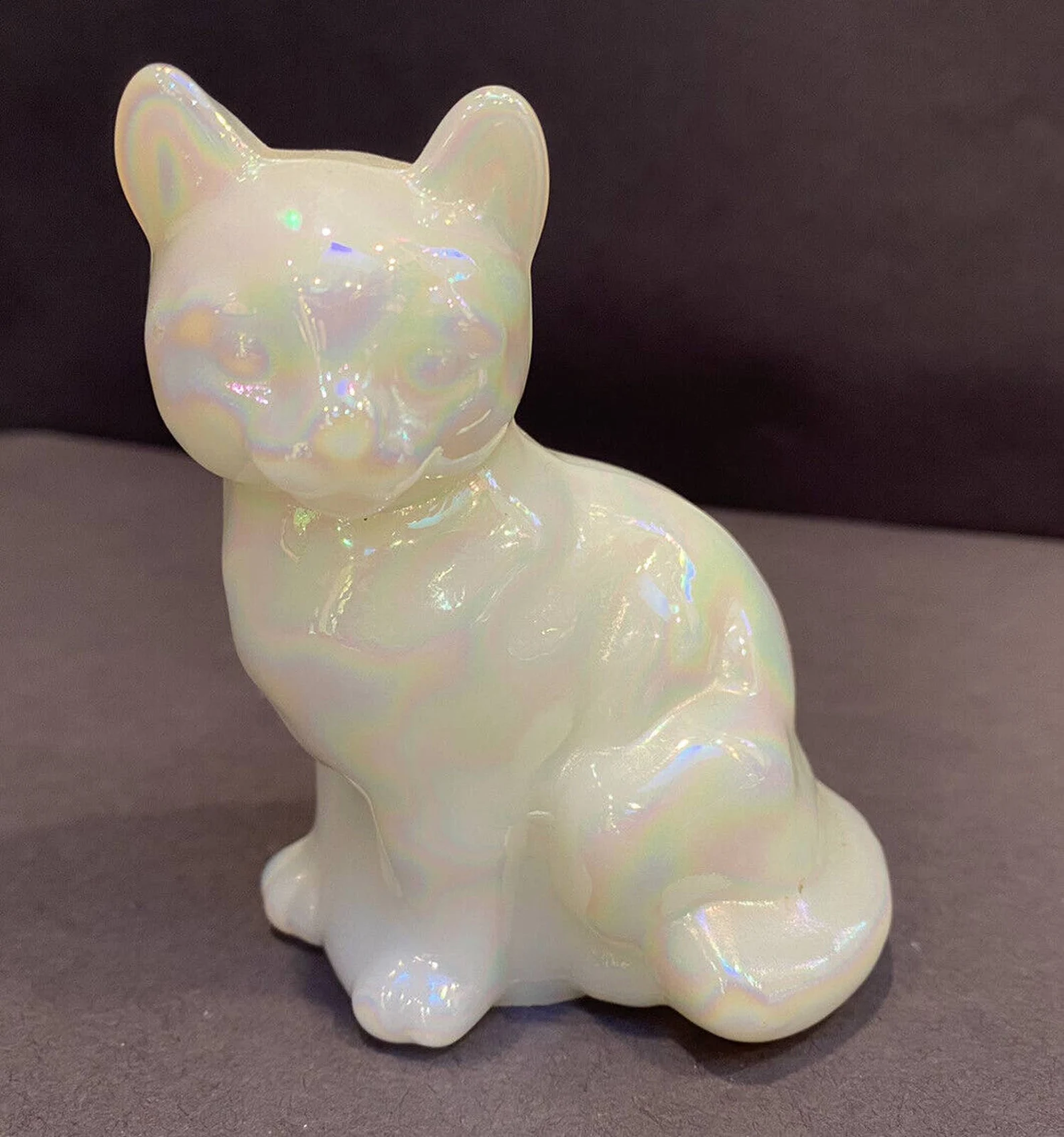
When It Comes To Identifying Milk Glass, There Are Several Factors To Consider . Here’s a Closer Look At Each Of These Factors:
Pattern: Many milk glass pieces were made in specific patterns, such as hobnail, grape, or paneled. Identifying the pattern can help you determine the manufacturer and age of the piece. For example, hobnail was a popular pattern made by the Fenton Art Glass Company in the early 1900s.
Age: Determining the age of milk glass can be tricky, as some patterns and shapes were produced over a long period of time. However, there are some general guidelines to follow. For example, milk glass made in the 1800s tends to be thicker and heavier than pieces made in the 1900s, which were often thinner and more delicate. Additionally, milk glass made in the 1950s and 1960s tends to have a more uniform, machine-made look.
Color: While milk glass is typically white, there are variations in color that can help identify a piece. For example, some milk glass has a blue, pink, or yellow tint, which can indicate the manufacturer or time period. For example, pink-tinted milk glass was popular in the 1950s.
Shape: The shape of a milk glass piece can also help identify the manufacturer and age. For example, many Victorian-era milk glass pieces were bulbous and round, while mid-century pieces were often more angular and streamlined.
Weight: As mentioned earlier, the weight of a milk glass piece can provide clues about its age and quality. Victorian-era milk glass tends to be thicker and heavier, while mid-century pieces are often thinner and lighter.
Rarity: Some milk glass patterns and shapes are more rare or valuable than others. For example, a rare Fenton pattern or an unusual shaped piece may be more valuable to collectors than a more common pattern or shape.

In addition to these factors, there are other clues to look for when identifying milk glass, such as the presence of seams or mold marks, and the quality of the glass itself. Milk glass made by higher-end manufacturers tends to be of better quality, with a more refined finish and fewer flaws.









